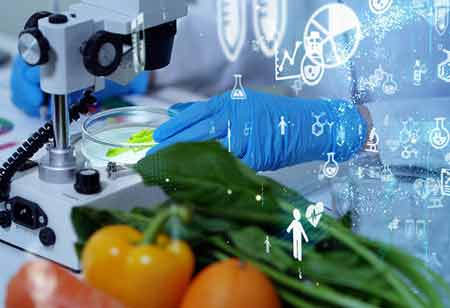Thank you for Subscribing to Agri Business Review Weekly Brief
Vitalizing Precision Farming with the support of AI and Automation
Artificial Intelligence (AI) has become the catchword across every business sector. In recent times,

By
Agri Business Review | Tuesday, April 05, 2022
Stay ahead of the industry with exclusive feature stories on the top companies, expert insights and the latest news delivered straight to your inbox. Subscribe today.
Earlier, diagnostic the right time to plant crops involved much guesswork and experience. Even today, these factors come into play, but AI takes the picture a stage forward. For example, AI can influence finding the best time to plant a crop by observing climate changes and following available data to extract a pattern.
FREMONT, CA: Artificial Intelligence (AI) has become the catchword across every business sector. In recent times, AI, combined with automation, is revamping how we conduct agriculture. The rise of precision farming has uncovered new ways for farmers to operate efficiently. Today, agriculture has become contingent on sensors, GPS satellites, drones, and robots powered by data and various technology devices. Automation can initiate less friction and fewer issues for farmers for crop-based resolution and interaction with the USDA.
The Best Time to Plant Crops
Earlier, designating the right time to plant crops involved much guesswork and experience. Even today, these factors come into play, but AI takes the picture a step forward. Advantages to recognize the best time to plant a crop by observing climate rage and looking into available data to extract a pattern. AI is ideal for small-scale farmers as it provides alerts on planting specifics like depth of seed and location. Small-scale farming can also influence the Internet of Things (IoT) devices. Connected sensors can help check the nutrient level, density, etc. Using such details, farmers can stay clear of previously made mistakes and escape poor results, whereas prior reasoned ones are inevitable.
Research the Best Ways to Meet Future Needs
Agriculture, together with automation, is not just helpful for farmers in the present but also for farmers of the future. Research studies regarding data collected by the new technologies can acclimate forecast patterns and set up trends for future farmers to follow. Automation can apply a better future for the agriculture sector in this approach. For example, crop monitoring software can predict crop development rates, preparing better for the upcoming crop season. While using technologies like automation, it is vital to track the effectiveness of the technology to make sure the process is going in the desired direction.
A Better Look at Crop Conditions
For decades, farmers depended simply on eyesight to inspect different aspects of the cultivation. Walking amidst crops to distinguish which part was well hydrated and which dehydrated and scooping up the soil in hand to see the density of the land were standard practices among farmers. These age-old procedures have now swapped with inspection planes equipped with high-resolution cameras that gauge all the critical aspects of crop cultivation. Drone technology is also swiftly taking over the farming scenario. These drones can assist monitor crops and identify various problems ranging from pest assault to planting errors that can potentially ruin the harvest. Whether planes, satellites, or drones, all the info is summonsed through data centers to give the final verdict to farmers. These technologies can also be weighted to conduct time-based studies where the crop is checked over time and observed changes in the farmland and surrounding areas.





